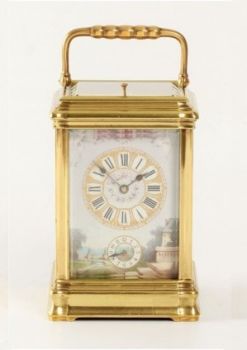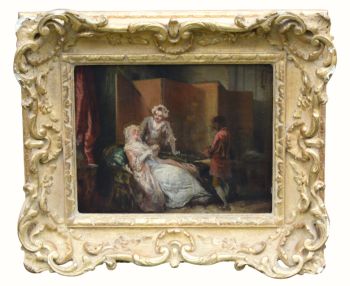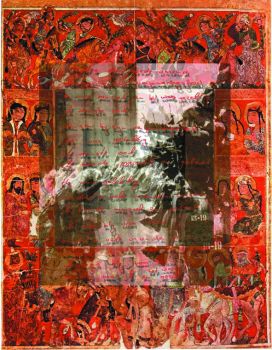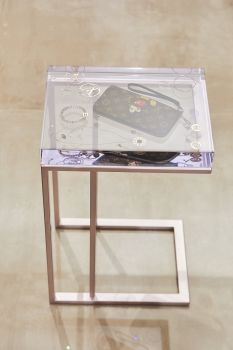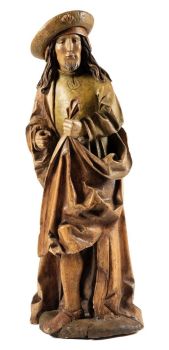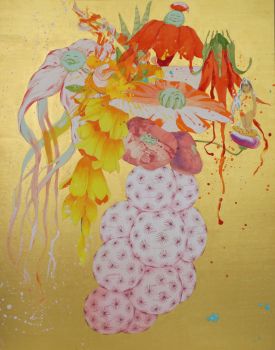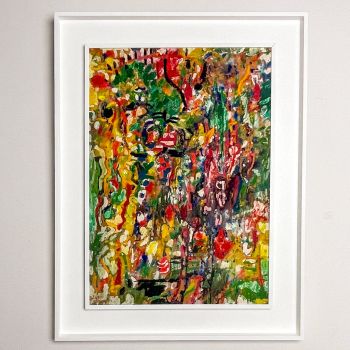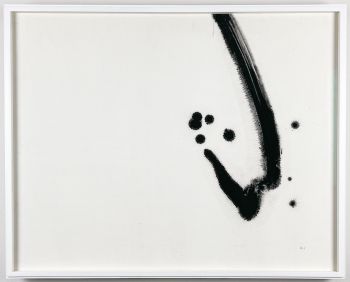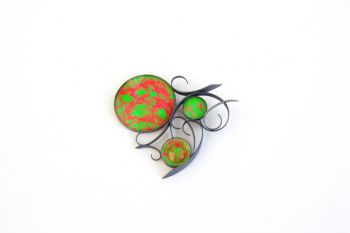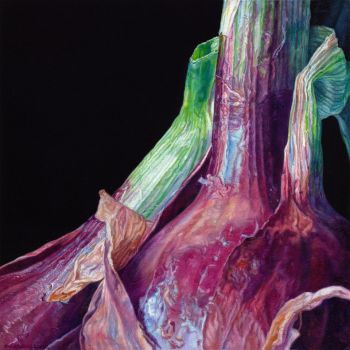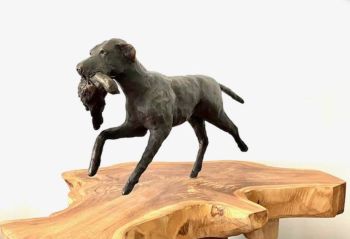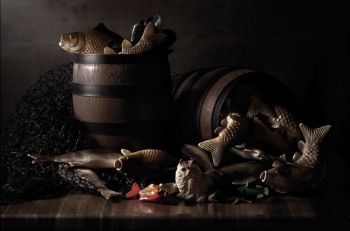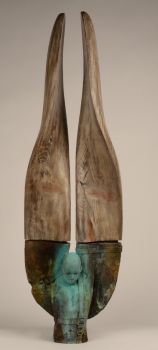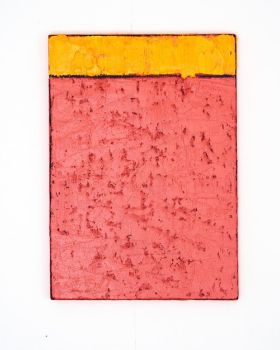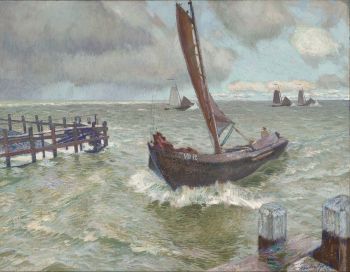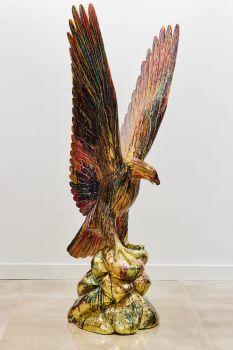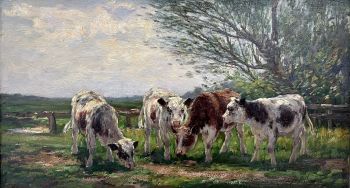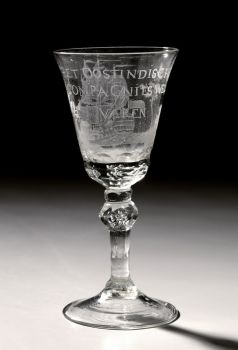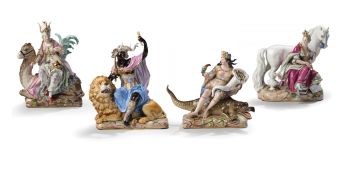A Dutch Chinoiserie pinewood polychrome lacquered cabinet on stand 1650 - 1700
Artista Desconocido
MaderaBarniz
218 ⨯ 140 ⨯ 56 cm
Precio a consultar
Zebregs & Röell - Fine Art - Antiques
- Sobre la obra de arte
Holland, late 17th century, with some later overpaintings
H. 218 x W. 140 x D. 56 cm
Provenance:
Collection Oprah Winfrey, Fisher Island, Miami
At the end of the 17th century, European lacquer art, as an attempt to imitate imported Japanese and Chinese lacquer art, started in Holland and England but rapidly spread to other European countries. If European lacquer art sought to imitate East Asian lacquer art, this was not very successful. First of all, the essential raw material for East-Asian lacquer work, the resin of the Rhus verniciflua tree, did not exist in Europe and raw lacquer could not be exported to Europe because it did not survive the long sea journey. Once dried, it is impossible to dissolve.
This meant that European lacquer workers had to work with inadequate materials. However, they quickly learned to develop suitable substitutes: spirit-lacquer/varnish and, even better, linseed oil-lacquer. Secondly, the Chinese and particularly the Japanese decorations were not well understood, so European lacquer workers developed their own decoration style, combining elements of Asian and European decorative styles, which also had to be adapted to the form of European furniture, such as the presented Dutch-shaped cabinet. This cabinet is an excellent example of high-quality lacquer work in the Netherlands in the late 17th century. In the 18th century, lacquerwork was made successfully in several European workshops. Even in the 19th century, this type of cabinet was still fashionable, so they were often restored (read: overpainted). Fortunately, this cabinet only has some small 19th-century additions to the decoration.
Source:
Monika Kopplin, European Lacquer, Hirmer Verlag, Munich, 2010 - Sobre el artista
Puede suceder que un artista o creador sea desconocido.
Algunas obras no deben determinarse por quién está hecho o por (un grupo de) artesanos. Algunos ejemplos son estatuas de la Antigüedad, muebles, espejos o firmas que no son claras o legibles, pero también algunas obras no están firmadas en absoluto.
También puedes encontrar la siguiente descripción:
•"Atribuido a …." En su opinión, probablemente una obra del artista, al menos en parte.
•“Estudio de….” o “Taller de” En su opinión, una obra ejecutada en el estudio o taller del artista, posiblemente bajo su supervisión
•“Círculo de…” En su opinión, una obra del período del artista que muestra su influencia, estrechamente asociado con el artista pero no necesariamente su alumno.
•"Estilo de …." o “Seguidor de…”. En su opinión, una obra ejecutada al estilo del artista pero no necesariamente por un alumno; puede ser contemporáneo o casi contemporáneo
•"Manera de …." En su opinión una obra al estilo del artista pero de fecha posterior
•"Después …." En su opinión, una copia (de cualquier fecha) de una obra del artista
•“Firmado…”, “Fechado…” o “Inscrito” En su opinión, la obra ha sido firmada/fechada/inscrita por el artista. La adición de un signo de interrogación indica un elemento de duda.
•“Con firma…”, “Con fecha…”, “Con inscripción…” o “Lleva firma/fecha/inscripción” en su opinión la firma/fecha/inscripción ha sido añadida por alguien que no es el artista
¿Está interesado en comprar esta obra de arte?
Artwork details
Related artworks
- 1 - 4 / 12
Artista Desconocido
A silver spoon commemorating Juff’ Margareta van Hoorn1656 - 1694
Precio a consultarZebregs & Röell - Fine Art - Antiques
Artista Desconocido
Japanese transition-style lacquer coffer 1640 - 1650
Precio a consultarZebregs & Röell - Fine Art - Antiques
Paulus Franciscus Kromjong
Flores frente a Arearea Aka (alegría) por Gauguin '20th century
Precio a consultarZebregs & Röell - Fine Art - Antiques
Artista Desconocido
A Surinam-themed Amsterdam long-case clock1746 - 1756
Precio a consultarZebregs & Röell - Fine Art - Antiques
 curada por
curada porGallerease Magazine
Artista Desconocido
UN INUSUAL PLATO DE PLATA CON LOBBED INDONESIOlate 17th
Precio a consultarZebregs & Röell - Fine Art - Antiques
Thea G.F. Eschauzier
Retrato de una niña javanesa1931
Precio a consultarZebregs & Röell - Fine Art - Antiques
1 - 4 / 20 curada por
curada porDanny Bree
Artista Desconocido
A rare Japanese export lacquer medical instrument box1650 - 1700
Precio a consultarZebregs & Röell - Fine Art - Antiques
1 - 4 / 24Samuel Dejong
Anatomia Blue Heritage, Hercules Open2017 - 2019
Precio a consultarVilla del Arte Galleries
 curada por
curada porGallerease Magazine
1 - 4 / 24Artista Desconocido
A rare Japanese export lacquer medical instrument box1650 - 1700
Precio a consultarZebregs & Röell - Fine Art - Antiques
1 - 4 / 12












